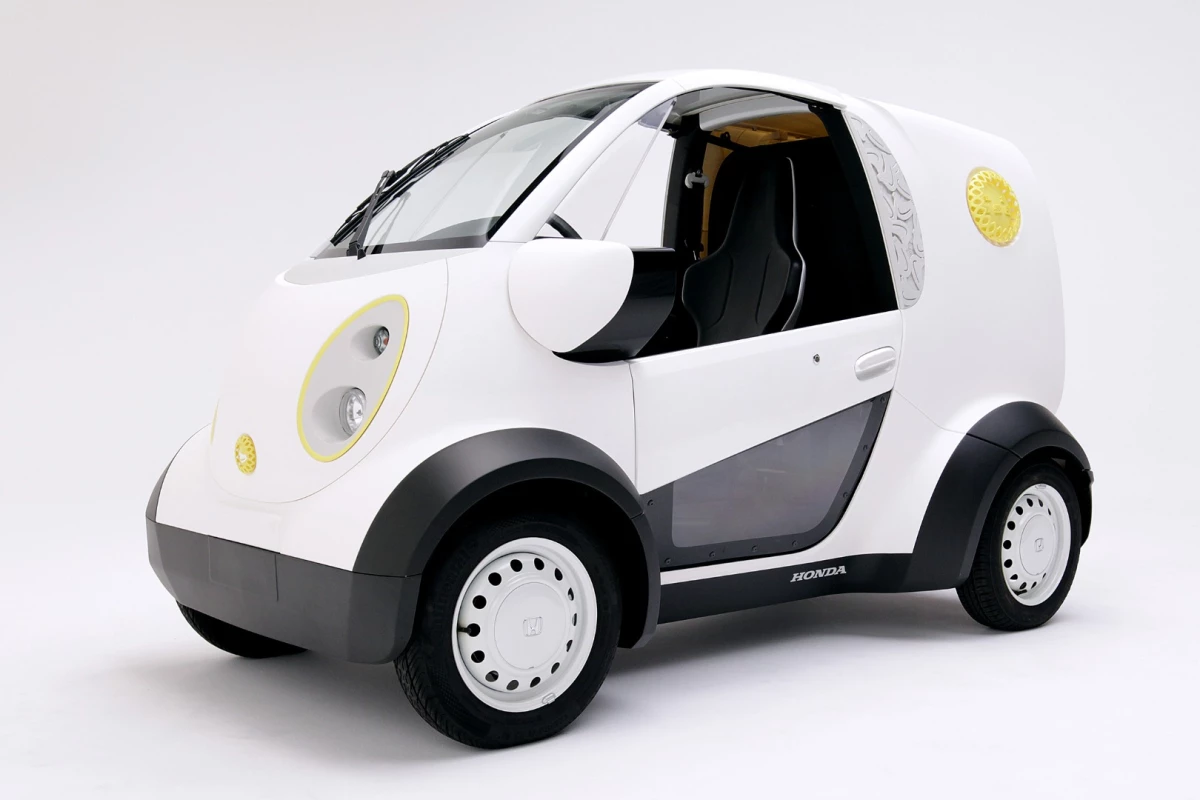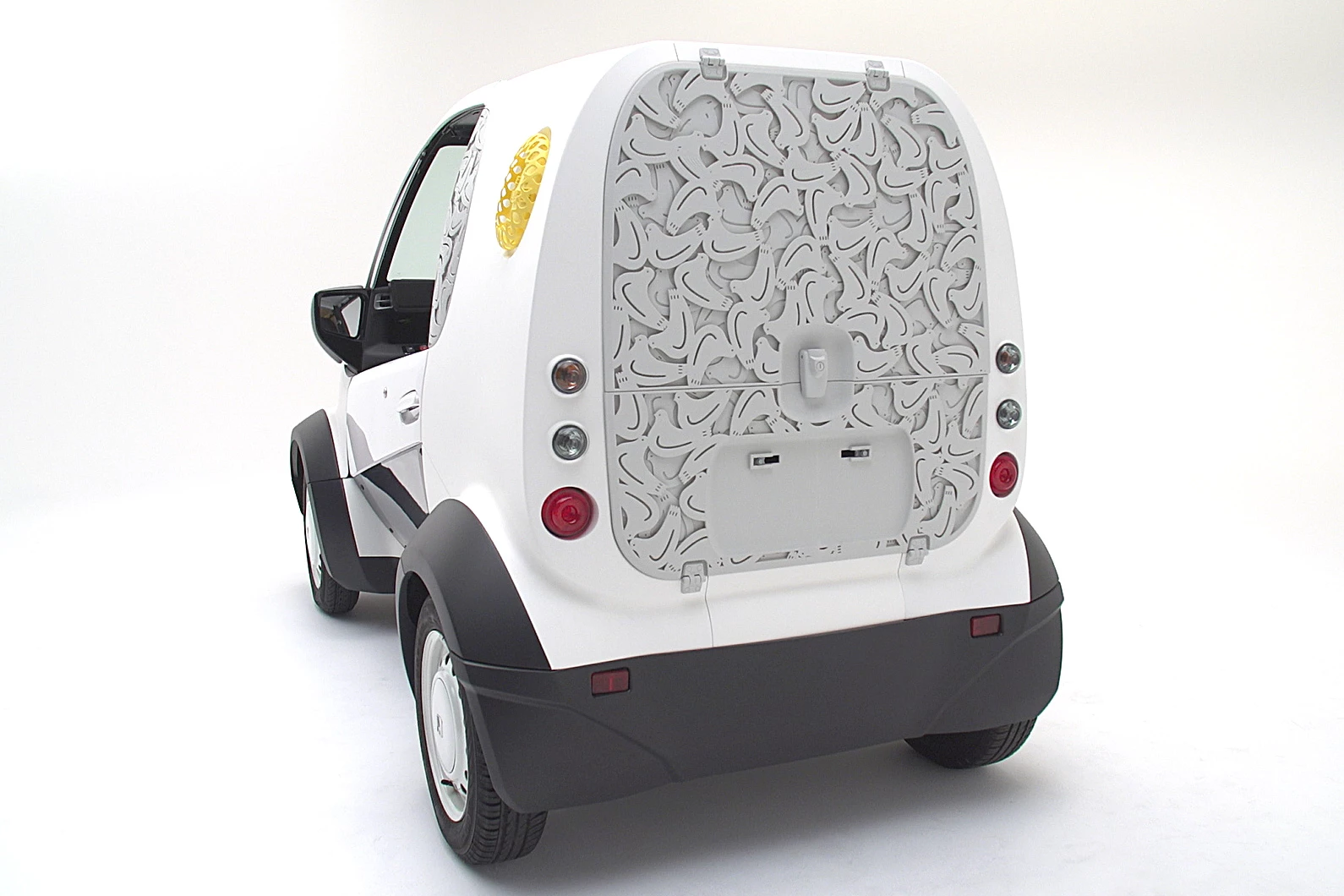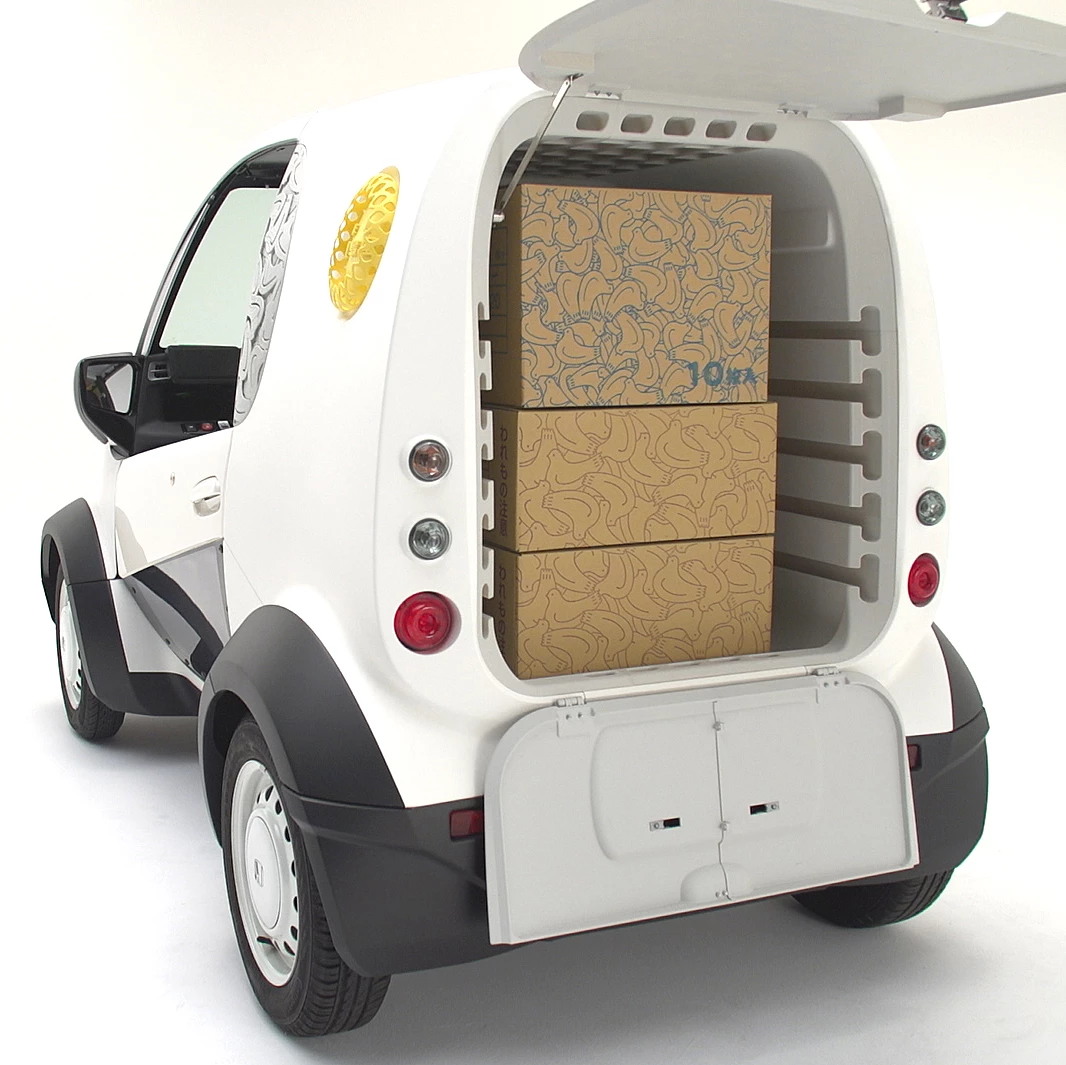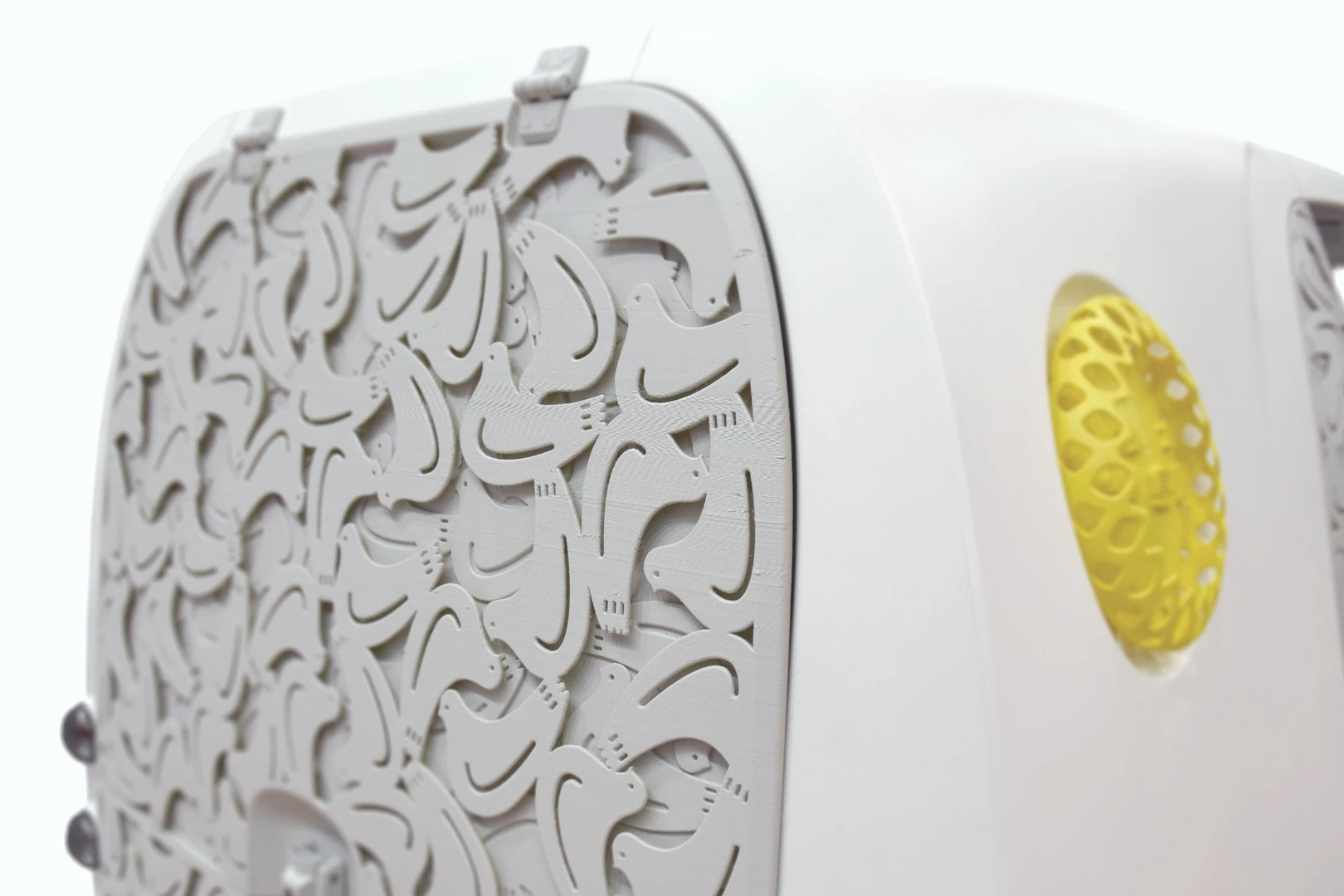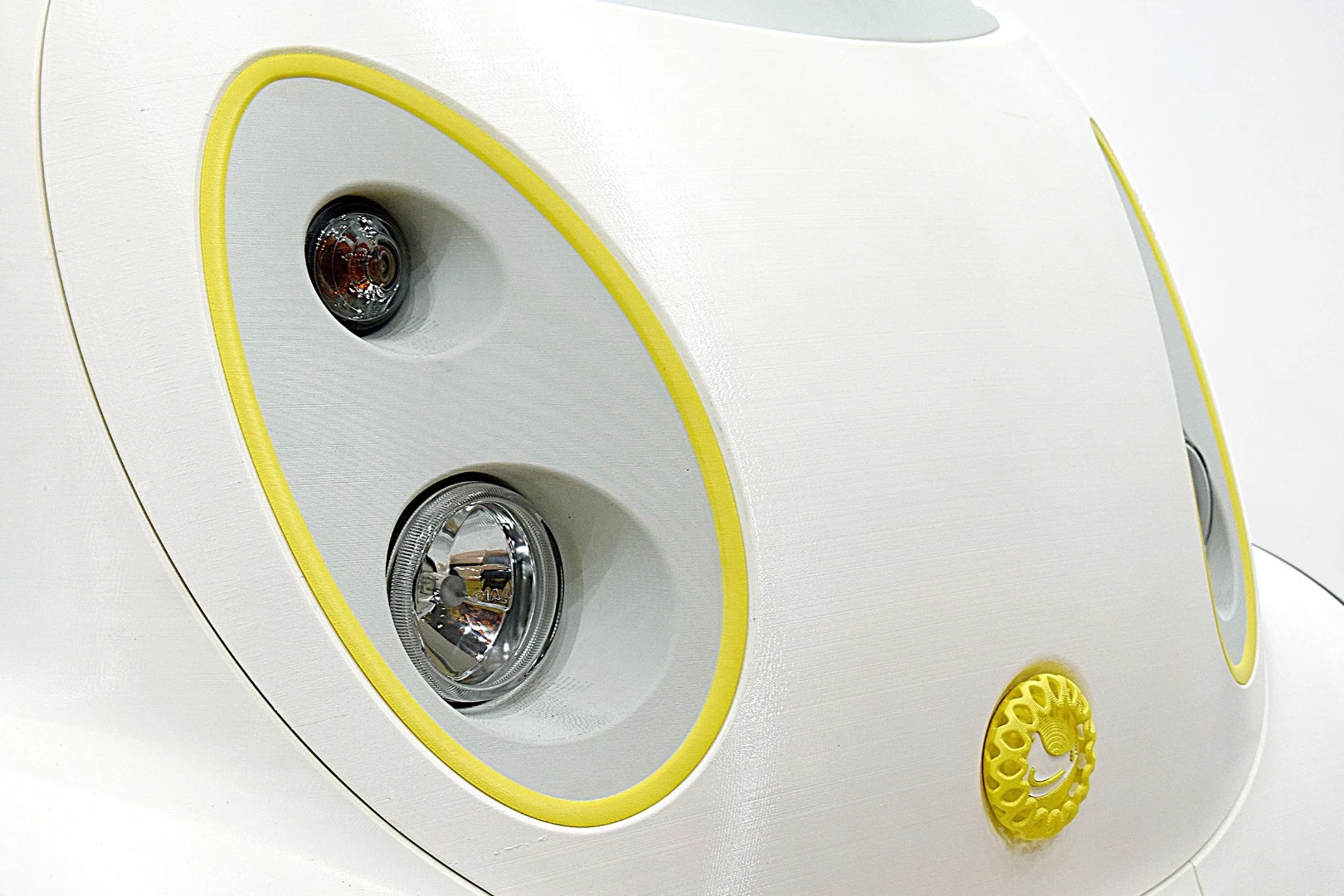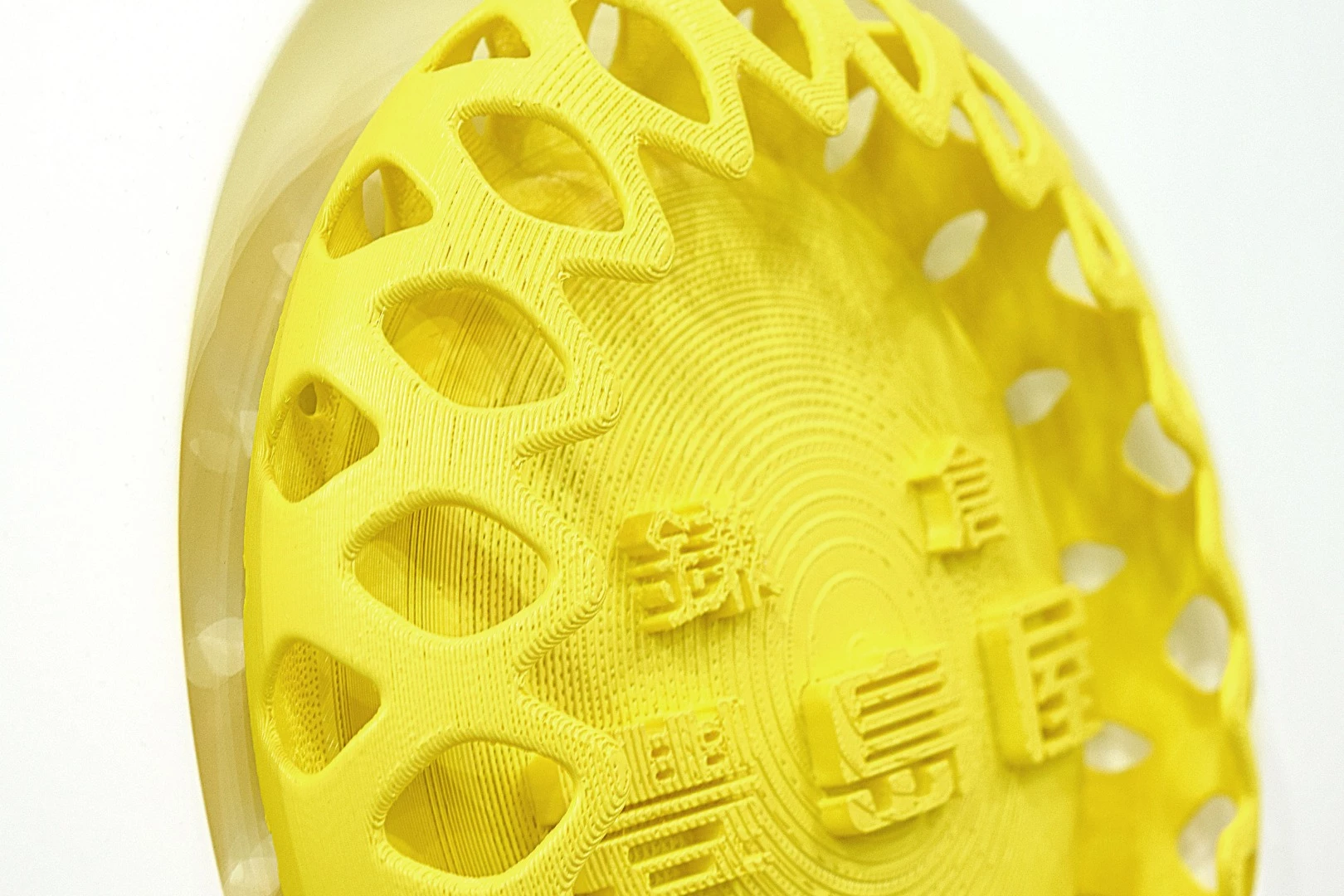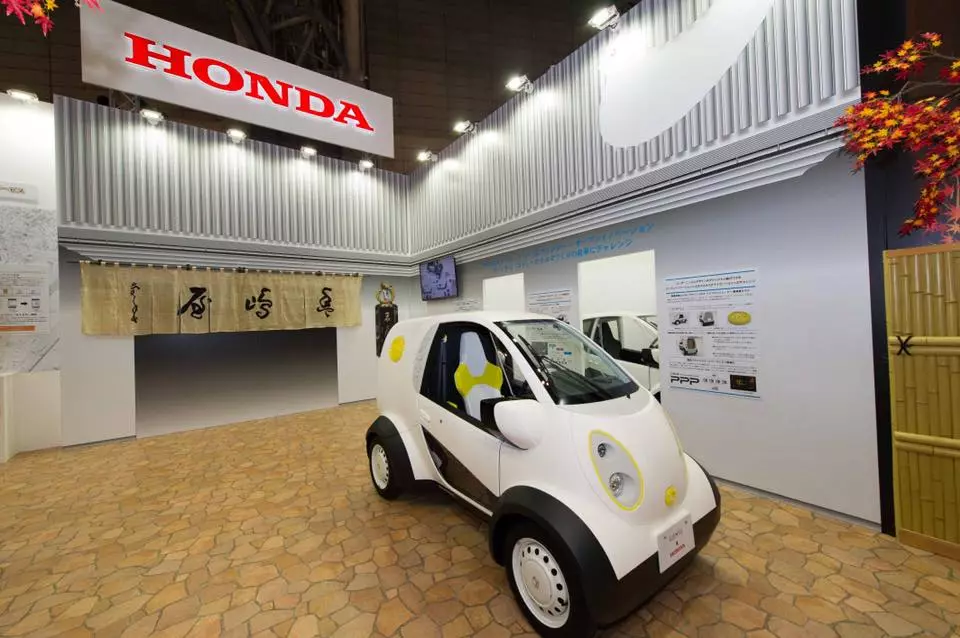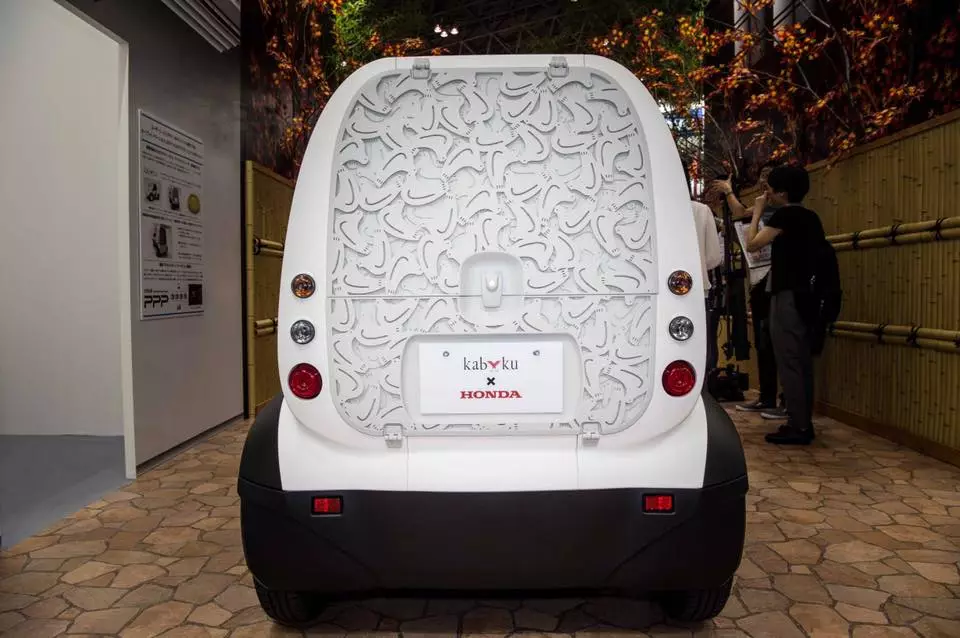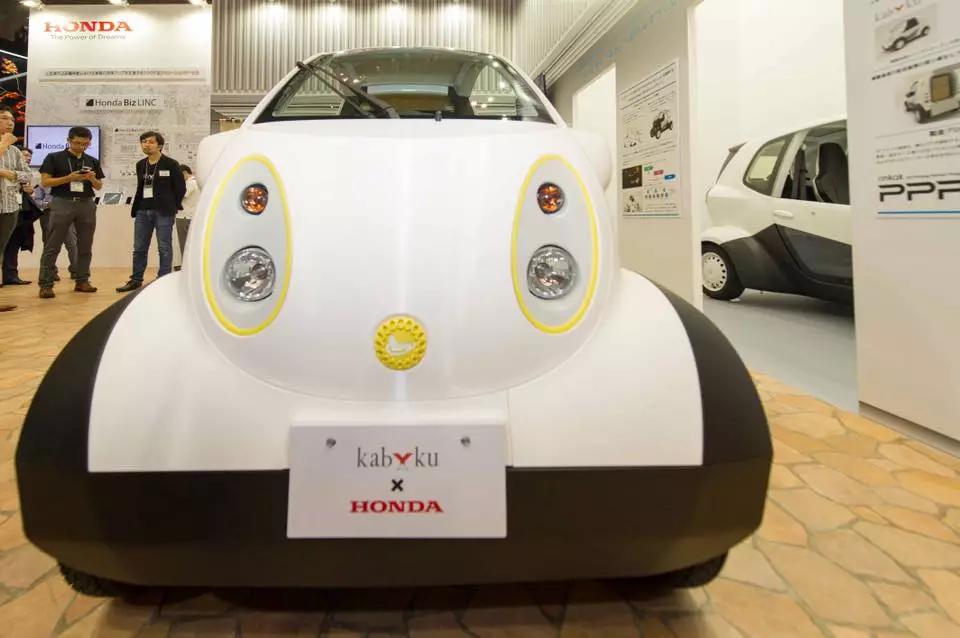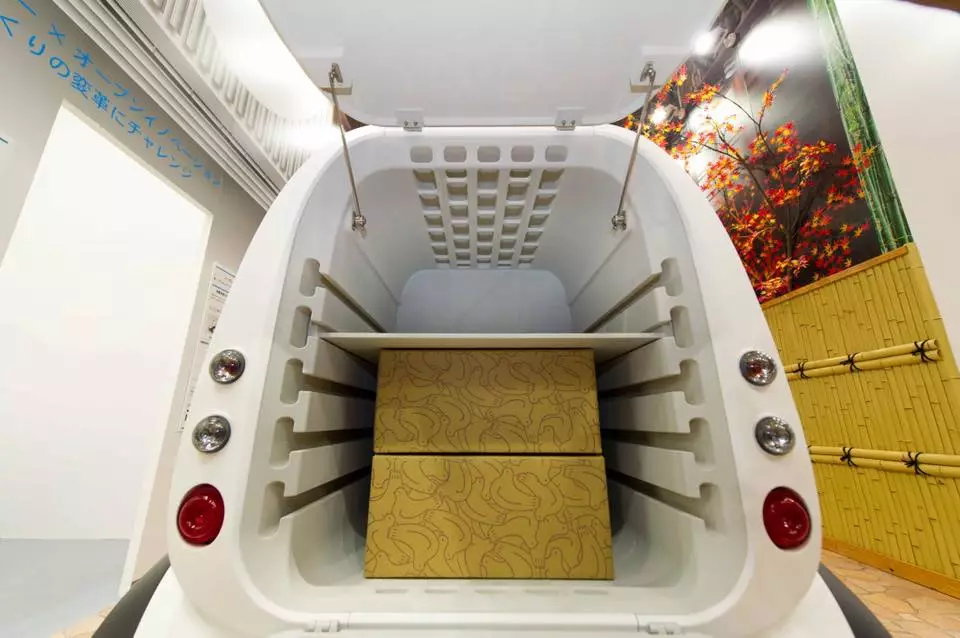Where 3D printing vehicles is concerned, Local Motors takes much of the headline chatter, but that's not to say others aren't dabbling with the technology. Last week, Honda and Kabuku unveiled a custom-designed electric vehicle for making deliveries, the body panels of which have been 3D-printed.
The Micro Commuter was created for confectionery firm Toshimaya, which needed a vehicle it could use for shortbread deliveries around its hometown of Kamakura in Japan and on which advertisements could be displayed. It was also necessary that the vehicle be able to negotiate Kamakura's narrows roads.
Working with digital fabrication outfit Kabuku, Honda developed the delivery vehicle over the course of about two months. It is based on the Micro Commuter Concept, which was first shown off in 2011, and employs Honda's Variable Design Platform. This sees key components – like the battery, motor and control unit – positioned together so that they can be easily used as the basis for other vehicles. The chassis, meanwhile, is constructed from a rigid lightweight pipe frame structure.
Where the Micro Commuter delivery vehicle differs from its forbears is the provision of space in the rear for transporting produce. This is in place of the two rear seats and means that the only seat in the vehicle is for the centrally-positioned driver. Overall, the vehicle measures 2,495 x 1,280 x 1,545 mm (98 x and 50 x 61 in) weighs just 600 kg (1,323 lb).

The vehicle also makes use of Kabuku's "Rinkak Mass Customization Solutions," which provide rapid 3D design, mold-less 3D printing and a network of factories for fabrication. The 3D printing is used to produce the vehicle's exterior panels, making it relatively quick and straightforward to customize them as required.
Under the hood is an 11-kW (15 hp) electric motor that gives the Micro Commuter a top speed of 70 km/h (43 mph) and a range of around 80 km (50 mi). According to Honda, the battery can be charged in under 3 hours at AC 200 V or under 7 hours at AC 100 V.
The Micro Commuter delivery vehicle was demonstrated last week at the Combined Exhibition of Advanced Technologies (CEATEC) IT and electronics trade show in Japan.
